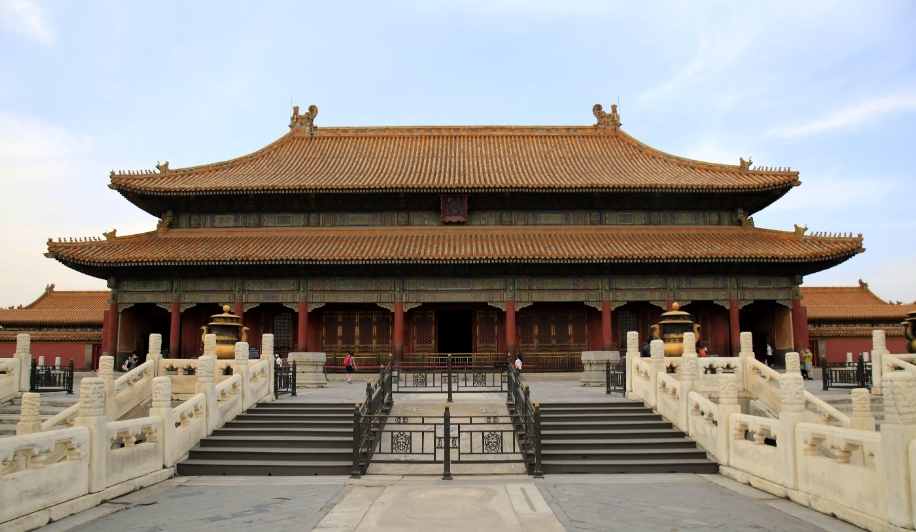
What Happened to the Forbidden City?
The Forbidden City, a magnificent testament to Chinese imperial power and architectural ingenuity, stands today not as a seat of emperors, but as a vibrant museum and UNESCO World Heritage Site. Let's delve into its fascinating history and current status:
From Imperial Residence to Public Museum:
-
Construction & Imperial Reign: Erected between 1406 and 1420 during the Ming Dynasty, the Forbidden City served as the political and cultural heart of China for almost five centuries. Twenty-four emperors, from the Ming and subsequent Qing Dynasty, ruled from within its imposing walls. The name "Forbidden City" (紫禁城, Zǐjìnchéng) itself signifies its exclusivity. Access was strictly forbidden to commoners, with only the imperial family, court officials, and invited guests allowed entry.
-
The End of an Era: In 1912, with the abdication of the last emperor, Puyi, the Forbidden City ceased to be the center of imperial power. While Puyi was allowed to reside within the inner court for a time, the palace complex was effectively transformed into a museum under the name "Palace Museum" (故宫博物院, Gùgōng Bówùyuàn) in 1925.
A World Heritage Treasure:
-
Architectural Marvel: Comprising 980 buildings and boasting nearly 9,000 rooms, the Forbidden City is the world's largest extant palace complex. It exemplifies traditional Chinese palatial architecture, characterized by grand courtyards, imposing gates, and intricately decorated halls and pavilions. The layout adheres to principles of feng shui and embodies Confucian philosophies of harmony and order.
-
Cultural Significance: The Forbidden City served not only as a residence but also as a stage for grand ceremonies, political intrigue, and everyday life of the imperial court. It houses an invaluable collection of art, furniture, ceramics, and imperial artifacts, offering a window into China's rich cultural heritage.
-
UNESCO Recognition: In 1987, UNESCO designated the Forbidden City a World Heritage Site, recognizing its exceptional historical, architectural, and cultural significance. The site attracts millions of visitors annually, making it one of the most popular tourist destinations globally.
The Forbidden City Today:
The Palace Museum meticulously preserves and manages the Forbidden City, striving to balance its historical integrity with its role as a public museum and cultural institution.
-
Preservation Efforts: Ongoing restoration projects aim to conserve the aging structures and protect them from the elements and environmental damage. The museum employs traditional techniques and materials whenever possible, ensuring the authenticity of the restoration work.
-
Museum Experience: Visitors can explore numerous courtyards, halls, and gardens, marveling at the architectural grandeur and intricate details. The Palace Museum also curates exhibitions showcasing its vast collection, offering insights into imperial life, art, and history.
-
Cultural Hub: Beyond its museum function, the Forbidden City hosts cultural events, performances, and educational programs, promoting Chinese culture and heritage to both domestic and international audiences.
The Forbidden City, no longer shrouded in imperial secrecy, stands as a testament to China's illustrious past and a vibrant cultural center in the present. It offers a captivating journey through time, inviting visitors to explore its architectural splendor, unravel its historical narratives, and appreciate the enduring legacy of Chinese civilization.
Q&A
1. What is the significance of the Forbidden City's name?
The name "Forbidden City" stems from its historical exclusivity. During the Ming and Qing dynasties, access was strictly forbidden to commoners, with entry reserved solely for the imperial family, court officials, and invited guests. This name reflects the palace's status as the epicenter of imperial power and its separation from the outside world.
2. How does the Forbidden City represent Chinese architecture?
The Forbidden City epitomizes traditional Chinese palatial architecture. Its design embodies principles of symmetry, hierarchy, and harmony, reflecting Confucian ideals of social order and cosmic balance. Key features include grand courtyards, imposing gates, sweeping roofs with intricate bracketing systems, and vibrant color schemes employing symbolic colors like yellow and red.
3. What is the role of the Palace Museum today?
The Palace Museum, established in 1925, is responsible for the preservation, management, and exhibition of the Forbidden City. Beyond safeguarding its architectural integrity through ongoing restoration, the museum curates exhibitions, conducts research, and organizes cultural programs. Its mission is to promote understanding and appreciation for Chinese history, art, and culture among a global audience.
note: This return of all, without the author's permission, may not be reproduced